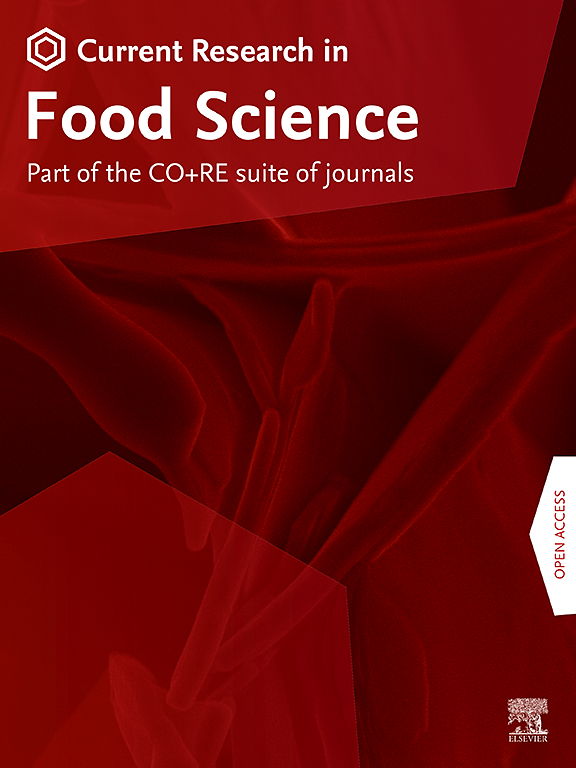Foaming properties and olfactory profile of fermented chickpea aquafaba and its application in vegan chocolate mousse
IF 6.2
2区 农林科学
Q1 FOOD SCIENCE & TECHNOLOGY
引用次数: 0
Abstract
Aquafaba, the cooking water of chickpeas and other pulses, is used as a vegan egg white substitute because of its favorable technofunctional properties. Nonetheless, its application is often restricted by a “beany” flavor and poor foaming properties compared to egg white. To overcome these limitations, aquafaba was fermented with two edible basidiomycetes. During the fermentation process, foaming properties were measured and analyzed. Furthermore, the aroma change was described by sensory experts. Based on these results, the optimal fermentation day was selected for each mushroom and sensory profiling was conducted. Subsequently, chocolate mousse was prepared from fermented aquafaba and profiled as well as tested in an acceptance test. Aquafaba profiling revealed significantly lower scores (α = 5%) for “beany” odor in fermented samples. Chocolate mousse produced with fermented aquafaba was described as less “beany” but more “chocolatey” and “cocoa-like” in smell and taste, and more “sweet” in taste. The texture of mousse prepared with fermented aquafaba was more “fluffy/light/porous” and “soft” but less “homogenous” than mousse with unfermented aquafaba. The consumer test showed high overall liking for all mousses. The research described in this study revealed for the first time promising aroma changes based on fermentation in aquafaba and demonstrated improved foaming properties. Thus, fermentation can be considered a useful tool to enhance the quality of aquafaba and thus expand its fields of application.

求助全文
约1分钟内获得全文
求助全文
来源期刊

Current Research in Food Science
Agricultural and Biological Sciences-Food Science
CiteScore
7.40
自引率
3.20%
发文量
232
审稿时长
84 days
期刊介绍:
Current Research in Food Science is an international peer-reviewed journal dedicated to advancing the breadth of knowledge in the field of food science. It serves as a platform for publishing original research articles and short communications that encompass a wide array of topics, including food chemistry, physics, microbiology, nutrition, nutraceuticals, process and package engineering, materials science, food sustainability, and food security. By covering these diverse areas, the journal aims to provide a comprehensive source of the latest scientific findings and technological advancements that are shaping the future of the food industry. The journal's scope is designed to address the multidisciplinary nature of food science, reflecting its commitment to promoting innovation and ensuring the safety and quality of the food supply.
 求助内容:
求助内容: 应助结果提醒方式:
应助结果提醒方式:


